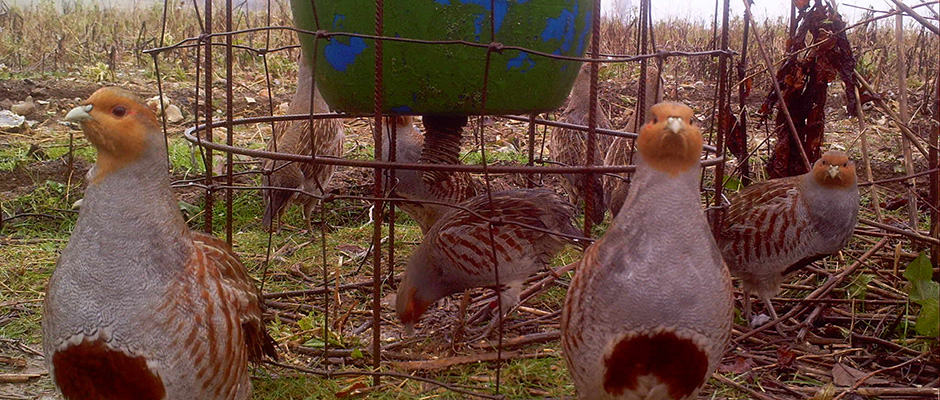Share this article
Supplementary Gamebird Feeding
A bird in hand is worth two in the bush, the old saying goes. But a bird feeder can be worth a lot more to farmers in England who participate in Environmental Stewardship, an agri-environmental program that encourages farmers to provide habitat and food to declining gamebird populations.
A study published recently in The Journal of Wildlife Management shows how farmers and game managers can maximize efficiency when it comes to supplementary feeding of gamebirds. The study looked at the distribution of grain from birdfeeders among various species of wildlife and how much of the food was being delivered to the target species. In this case, the target species were ring-necked pheasants (Phasianus colchicus), gray partridges (Perdix perdix) and red-legged partridges (Alectoris rufa) across three lowland farms in southern England.
Lead author Carlos Sánchez-García along with researchers Francis Buner and Nicholas Aebischer found that in order to most effectively feed gamebirds and minimize visitation by rodents and other species, feeders must be placed strategically and moved often. In areas with efficient rodent control, the researchers suggest placing feeders along hedgerows and in open fields in areas with no rodent control. Contrary to popular belief, feeders also should be moved every 7-10 days, which helps reduce grain consumption by rodents, who take two to four days to find feeders after they’ve been moved. Birds, meanwhile, tend to find feeders fairly easily.
“There is still a significant proportion of estates that only feed during the shooting season and do not pay enough attention to pest species that may use feeders,” Sánchez-García said.
The researchers set up camera traps at 259 game feeders to identify the species at the sites and how many individuals were feeding there. They measured the amount of grain per feeder before and after each trial and used an equation to calculate the amount of food eaten by one animal of each species observed. In all, 47 different species visited the feeders, and targeted gamebirds accounted for less than half of those visits. Non-target species accounted for 67 percent of the total grain consumed during the study. To best replicate standard conditions throughout England, no pest control was used at the feeder sites.
Brown rats (Rattus norvegicus) were the most frequent rodent to visit the feeders, accounting for 16.8 percent of all visits recorded. Only pheasants and wood pigeons (Columba palumbus) had higher percentages of visits to the feeders, with 19.6 and 17.3, respectively.
“In Britain, rats often spread from farm buildings to the countryside, so it is crucial to reduce the amount of food and shelter available at those areas,” Sánchez-García said. “Once rats have spread, trapping and hunting are recommended to halt their populations, and feeders can be used to concentrate and control them.”
Although the study was conducted in England, Sánchez-García says the results can be applied throughout Europe and elsewhere. Researchers and practitioners from around the world are interested in this study because of its implications for gamebird conservation as well as other species of conservation interest. The new data also has raised questions about feeder design, and moving forward, researchers may want to look at developing a feeder that prevents use by non-target species.
“Our research shows how game management may benefit game and other wildlife, though we need to rethink practices to ensure that they deliver what is promised,” Sánchez-García said.
Header Image:
A covey of gray partridges gather at a game feeder in southern England. New research shows that non-bird species are consuming the majority of the grain from feeders intended for gamebirds. Researchers are suggesting new feeding practices based on the data.
Image Credit Carlos Sánchez-García








